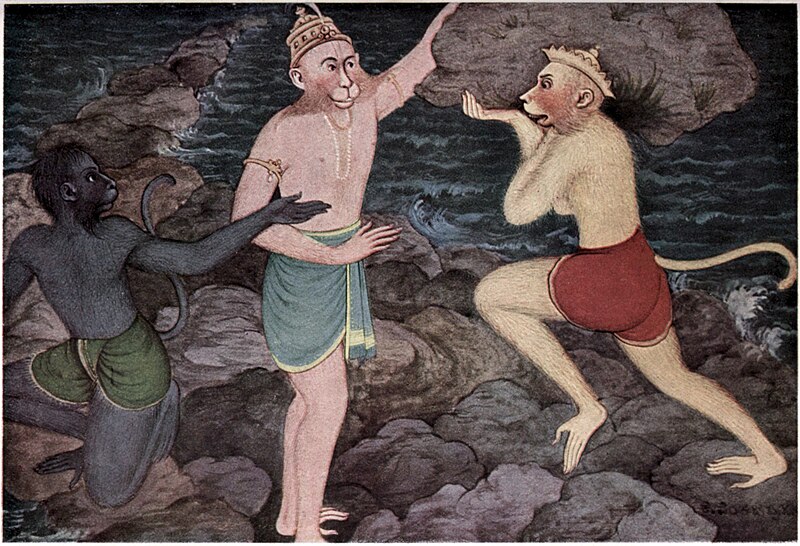Reading Notes: Ramayana, Part D – The Bridge

This is a painting of Nala building Rama's Bridge, with the help of some other monkeys.
(Source: Wikipedia Commons)
The Bridge
Rama and his army of monkeys and bears needed to cross the waters that stood between them and Lanka, so he performed sacrifices in an attempt to summon the God of Ocean but to his rituals, came no response. This made Rama so mad that he took his bow and shot an arrow with the force of one hundred of the strongest winds into the ocean. This made this water rise into the sky and fall straight back down, shattering all of the mountains that felt the quake. This unsuccessful attempt made Rama even more mad, so he got ready to send an arrow of fire into the ocean, causing the God of Ocean to arise from the waters.
As the God of Ocean truly respected Rama and his divine being, he agreed to Rama’s wish to build a bridge in the God’s waters. Nala, the best artisan of the lands, built what he called “Rama’s Bridge” to connect those on the mainland in Lanka. As Rama and his army walked across the bridge, they could see the bad omens around them telling them to turn back. The earth shook and continued to shake, almost throwing them all off of the bridge. The clouds began to get darker and darker, suddenly pouring down storms of blood. The sun intensified, starting to burn off the cloth that was wrapped around Rama’s body. All of these omens were apparent, but a life without Sita was the biggest omen of all to Rama.
Four of the monkeys behind Rama said, “we’ll go ahead and scout out any danger that we may encounter up ahead“, but it turns out that these monkeys weren’t really a part of Rama’s army. They were spies of Ravana and they ran to Lanka, partly to warn Ravana of Rama and his army’s resilience, strength, and courage, and partly with the hope that they could instill Ravana with enough fear that he would just give Sita back to Rama.
I am going to rewrite this story to where Rama has to go through harsh measures to make the water leave the ocean, mirroring real life collective action that creates water scarcity in the world today, such as rising temperatures, inefficient use of water, etc.
Comments
Post a Comment